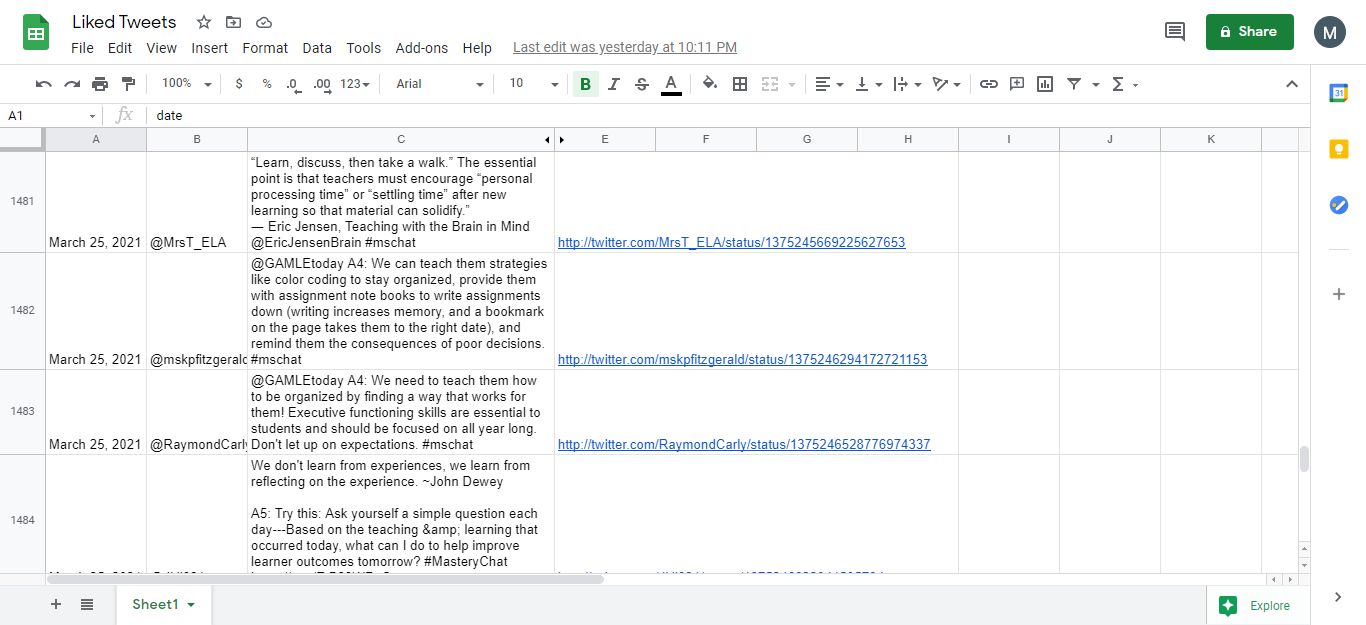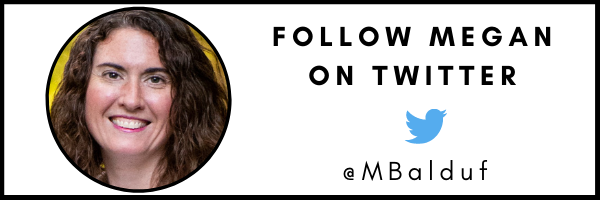TL;DR:
- There are multiple social media platforms to choose from. Determine what your needs are and use the app that will fit that best.
- Discover 4 tips for getting the most out of Twitter: (1) determine who is worth following, (2) find a way to collect the tweets you want to come back to, (3) engage in Twitter chats, and (4) decide if your Twitter account will be purely professional or not.
Technology connects us in ways we have never been able to before: video calls with far-flung friends and family; visual inspiration on Pinterest and Instagram; heart-warming, inspiring, and amusing content on Tik Tok and YouTube; connecting with like-minded others on Facebook and Twitter. How to navigate these options to make the most out of your experience is no easy feat.
The first step in making any social media help you grow is to determine what you want out of it. I turned to Twitter to expand my network and make connections outside of my building and local system. My toolbox needed refreshing; I wanted more resources—activities and lesson ideas—that I’d never have developed on my own. I have colleagues who are members of multiple Facebook groups or who have educators and influencers they follow on Instagram to get inspiration. Others I know turn to Tik Tok for ideas. The point is to determine what your needs are and use the app that will fit best.
Twitter is some of the best professional development I’ve ever engaged in. Social media is a way to invest in your professional growth without ever spending a cent! Share on X
Winning at Twitter
I first joined Twitter in 2015 after reading Diana Neebe’s and Jen Roberts’s Power Up: Making the Shift to 1:1 Teaching and Learning. For years I lurked, unsure of what to post. My first tweets were a mix of personal and professional comments. My profile picture was an avatar. It took me nearly four years to get to a point where Twitter became a powerful tool for my professional growth.
In navigating my experiences, I’ve found a small handful of tips that help me leverage the app best.
Tip #1 for Getting the Most out of Twitter
Determine who is worth following. Your Twitter timeline will reflect the tweets, retweets, and likes of those you follow. Since I joined at the suggestion of Power Up, my first follows were its authors. If you read educational texts, most authors are on Twitter and are willing to engage directly with readers. Following professional organizations, both those you belong to and those with content you care about is also a sure bet. When you become comfortable lurking on or participating in chats, following the people you engage with means you will see more of the content you’d been drawn to in the first place.
Tip #2 for Getting the Most out of Twitter
Find a way to collect the tweets you want to come back to. You can like tweets, but the more you like, the harder it becomes to find something specific. Jen Roberts suggested using IFTTT to connect Twitter to another service. IFTTT has applets (small program scripts rather than full applications) that will gather the tweets you favorite on Twitter and put them all in a searchable format. I have one set to put all my liked tweets into a Google Sheet that I can search by date, user, or content. Other applets connect Twitter favorites to Evernote or some Google products.

Likes from Twitter delivered to a Google Sheet for easy sorting.
If you don’t want to go this far, Dickie Bush has some tips on how to use Twitter’s advanced search feature, which can be a blessing if you know who authored the content you’re looking for.
Tip #3 for Getting the Most out of Twitter
Engage in Twitter chats. Yes, some are very fast-paced. Yes, some have lots and lots of people. The good news is the side conversations that spring up during chats are as fruitful a place for ideas as the main chat questions and answers. There are more chats than you can shake a stick at, so start with the organizations and people you follow.
When they come across your timeline with what looks like answers (usually tweets starting with A#:) and a hashtag, you can search by the hashtag and find the conversation. You can find tons of lists, like ISTE’s list from February 2021 of chats to participate in. It’s easy to lurk, meaning just read questions and responses until you feel comfortable enough to join in. Even if you don’t ever want to participate in a chat, knowing the hashtags for topics you care about means you can find and engage with posts on those issues when you have the time.
Tip #4 for Getting the Most out of Twitter
Decide if your Twitter account will be purely professional or not. It seems like this should be tip #1, but there are a lot of reasons why you might want to allow your personal and professional lives to overlap on Twitter, and many why you may want separate accounts. Depending on your school system’s expectations for employee presence online, how your school or community handles staff social media, and your own openness, you might have no problem keeping one account.
I follow some teachers whose strong liberal or conservative views are interspersed with their reflections on teaching. Other accounts seem to focus purely on what happens in the classroom. Like any social media account, do what you feel comfortable with.
[scroll down to keep reading]
Final Thoughts
Social media in any form is another way to connect with other educators. In the years since I’ve been active on Twitter, I’ve learned more from the conversations I’ve had and found more value in the materials shared than I had in several years of various conferences.
Despite its flaws—and all social media apps have them—Twitter is some of the best professional development I’ve ever engaged in. It has fostered a greater understanding of issues and encouraged deeper reflection on my practices than anything else I’ve experienced. Social media is a way to invest in your professional growth without ever spending a cent!
About Megan Balduf
Megan Balduf is an English teacher with more than fifteen years’ experience at the middle school level. While being a classroom teacher had always been her dream, her reality allowed her to reach beyond the walls of her classroom. With the encouragement of administrators at her school in Fairfax, VA, Megan has grown through various leadership positions including mentor teacher and English department chair. As a model of lifelong learning, since entering the classroom, Megan has earned an MA in Gifted Education, an MA in English for Language Arts Teachers, and became a National Board Certified Teacher. In her spare time, she enjoys reading, running, and being Mom to her two children.


